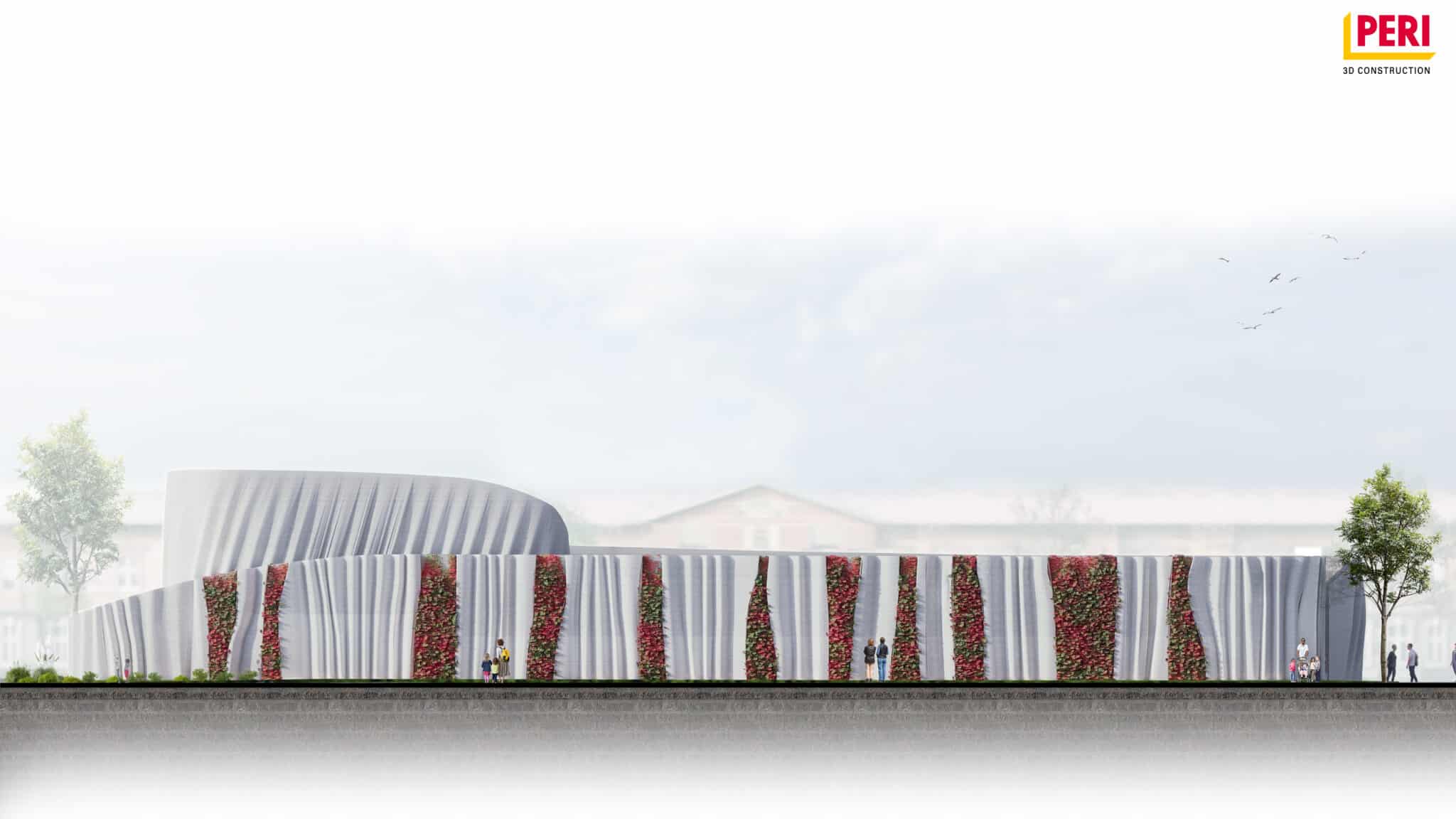Heidelberg, Germany: the largest 3D printer building in Europe

In Heidelberg, Germany, construction is underway on the largest 3D printer building in Europe. This is an extremely ambitious project that shows the great potential of building printing technology. It is a fast, relatively cheap and environmentally friendly way of constructing buildings, writes the VoxelMatters website.
It will be the largest building of its kind on the old continent. The structure, which will eventually be 55 metres long, 11 metres wide and 9 metres high, will be built in just 140 working hours. This is made possible by 3D printing technology – concrete is applied layer by layer using a giant printer.
However, the high work rate to create the building is not the only advantage of this technology. It also eliminates the need to constantly move heavy machinery around the site. It also significantly reduces the number of workers on site, with only two engineers supervising the work.
The material used in the project is called i.tech 3D. Advantages? It reduces material consumption by 70 percent, is 100 percent recyclable and has a significantly lower carbon footprint (about 55 percent) than traditional cement. It’s supplied by Heidelberg Materials, which sees huge potential in building printing.
Representatives of the German company also stress that they are aware of the limitations of the technology. After all, not every building project can be realised in this way. Especially if it contains special architectural elements. Nevertheless, the building under construction represents a leap over the bar. While houses made from a 3D printer are no longer surprising, such a colossus is something extraordinary and shows that 3D printing has more potential than it might seem.
Of course, after the aforementioned 140 hours, the building won’t be ready to move in. Even the best printer won’t install the windows and doors, take care of the roof and do the finishing touches. Still, the building that will serve as a data centre is expected to be operational fairly soon – by the end of July 2023.
Source, photo: woxelmatter.com
Author of this article
WAS THIS ARTICLE HELPFUL?
Support us to keep up the good work and to provide you even better content. Your donations will be used to help students get access to quality content for free and pay our contributors’ salaries, who work hard to create this website content! Thank you for all your support!




OR CONTINUE READING